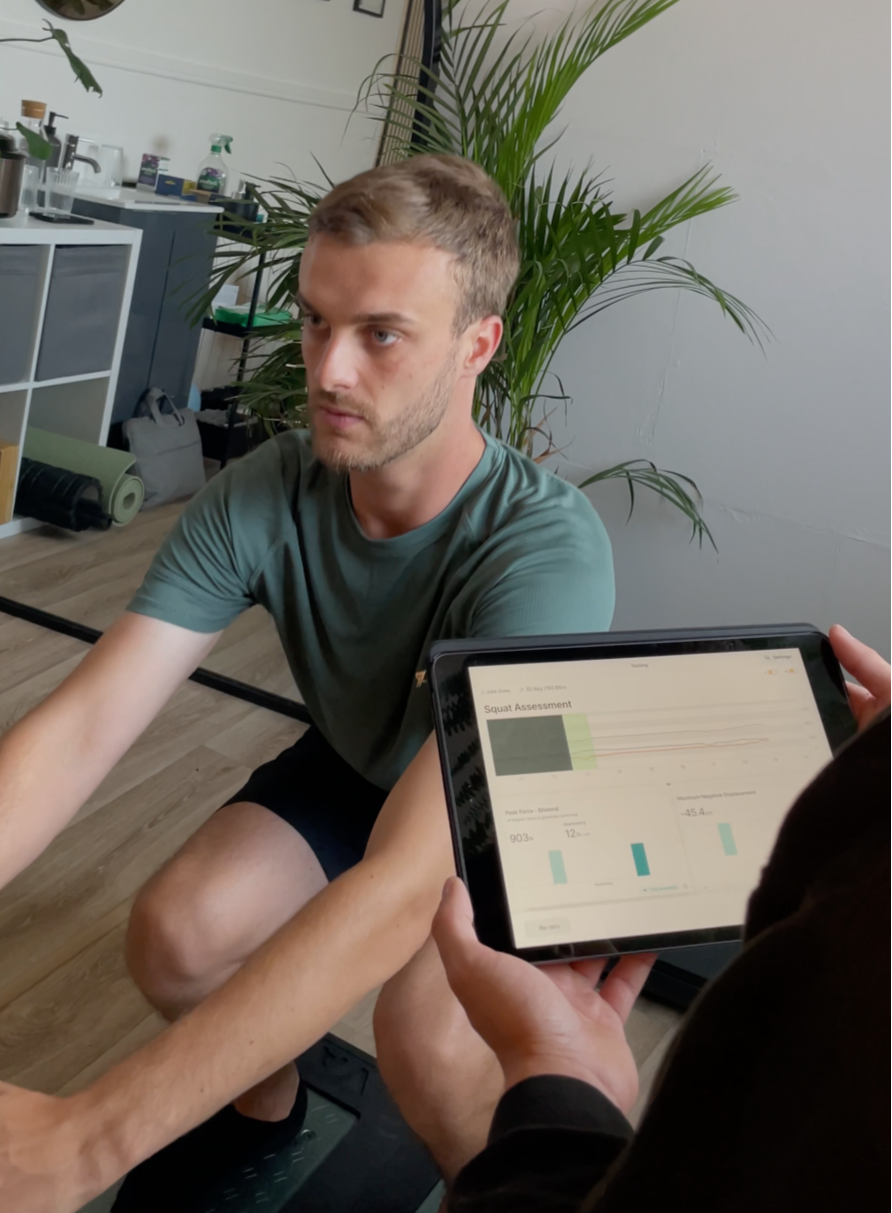Why Strength Training Is About Living Better
When most people hear “strength training,” they imagine bodybuilders or heavy gym sessions.
But in reality, strength training is for everyone — and it is one of the most powerful things you can do to stay healthy, active, and independent as you age.
At our peak performance clinic, we help people of all ages build strength safely and effectively.
Strength training isn’t about looking a certain way — it’s about moving better, feeling stronger, and living a more fulfilled life.
The Hidden Problem: Losing Strength as We Age
As we get older, our muscles naturally get smaller and weaker — a process called sarcopenia.
This can start as early as our 30s and speeds up after 50, leading to problems like:
Feeling less steady on your feet
Struggling with stairs, shopping bags or rising from a chair
Greater risk of falls, fractures, and hospital stays
Slower recovery from illness or injury
The good news? This is not inevitable. Regular strength training can slow down or even reverse this process. It helps keep your muscles, bones and joints strong — so you can keep doing the things you love for longer.
According to the UK Government and NHS, adults should:
● Do muscle-strengthening activities at least twice a week
● Get 150 minutes of moderate activity per week (like brisk walking or cycling)
● Older adults should also focus on balance and coordination exercises to reduce falls
You don’t need a gym membership to meet these targets — bodyweight exercises, resistance bands, or household items can all count. The key is to challenge your muscles in a safe, progressive way.
Clearing Up the Myths About Strength Training
Let’s tackle a few common misunderstandings:
1. “I don’t want to get bulky.”
You won’t. Building big muscles takes a specific type of training (and a lot of it!). Most people simply get stronger, leaner, and more capable.
2. “I’m too old or too injured to lift weights.”
In truth, strength training is one of the best things you can do as you age — and physiotherapists can tailor it safely for your level and any injuries you may have.
3. “It’s only for gym enthusiasts.”
Not at all! Strength training is about everyday life — lifting shopping bags, getting out of a chair easily, keeping your balance, or playing with your grandchildren.
4. “I might get injured.”
With proper guidance and good technique, strength training actually reduces your injury risk by improving muscle and joint stability.
How Strength Training Prevents Injuries
Stronger muscles act like protective armour for your joints and bones.
They help you:
● Stay steady and reduce falls
● Absorb impact when you move
● Avoid overloading your joints
● Recover faster from sprains or strains
Whether you’re returning to running, managing back pain, or just want to stay active, strength training is one of the best forms of “preventative physiotherapy.”
How Physiotherapists Can Help You Get Strong Safely
Physiotherapists are experts in movement, recovery, and exercise prescription.
Here’s how we can support you on your strength journey:
1. Assess your current strength and movement
We look at how your body moves, identify weak areas, and test muscle strength safely.
2. Design a programme just for you
Whether you’re new to exercise or already active, we tailor your plan to your goals, ability, and lifestyle.
3. Coach your technique
We make sure you’re moving correctly to get the most from each exercise — and avoid injury.
4. Monitor your progress
As your strength improves, we gradually increase the challenge to keep you moving forward.
5. Support recovery and performance
If you’re coming back from injury, we use strength work to rebuild your body — stronger than before.
Precision Strength Testing with VALD Technology
At our clinic, we have access to cutting-edge VALD technology — the same system used by elite sports teams and research centres — using this, we can measure your strength with incredible accuracy.
This includes:
● Force plates – to assess balance, jumping, landing and leg strength
● Hand-held dynamometers – to measure muscle strength in specific areas like hips, knees or shoulders
Why this matters:
● We can spot weaknesses or imbalances that may cause pain or injury
● We can track your progress over time with real data
● It helps us personalise your plan and make sure you’re getting stronger safely
It’s a bit like having a “strength fingerprint” — unique to you, and a powerful way to keep you motivated and on track.
The Bigger Picture: Strength Is for Life
Strength training is about so much more than lifting weights. It’s about:
● Moving with confidence
● Staying independent as you age
● Preventing injuries
● Boosting energy, bone health, and even mood
Whether you’re 25 or 75, it’s never too late to start getting stronger. And you don’t have to do it alone — our physiotherapists are here to guide, measure, and support you every step of the way.
Want to Know How Strong You Really Are?
Book a Physiotherapy assessment with our team. Add on the VALD technology so that we can measure your baseline, explain what it means, and design a simple plan to help you build strength safely and effectively.




